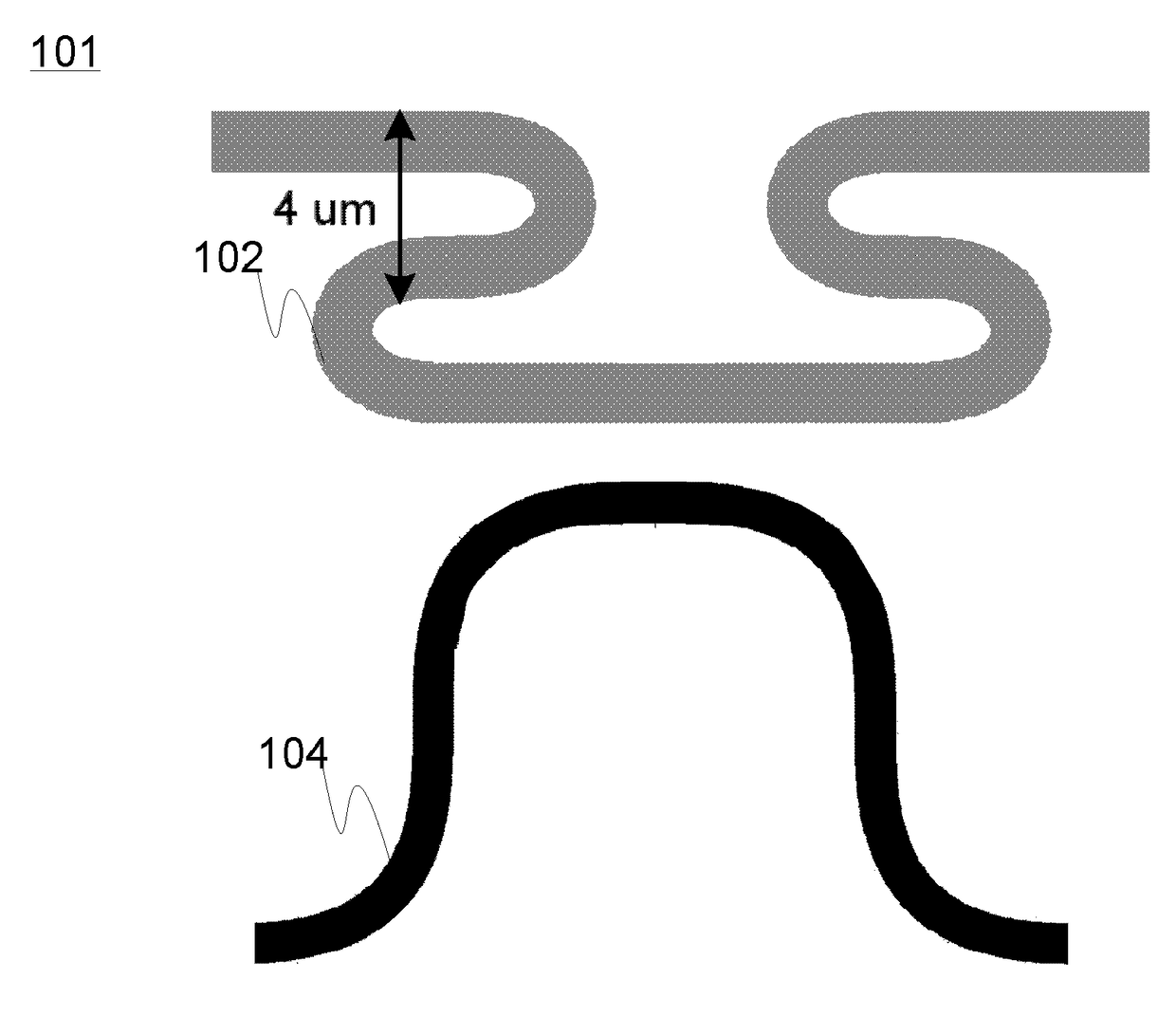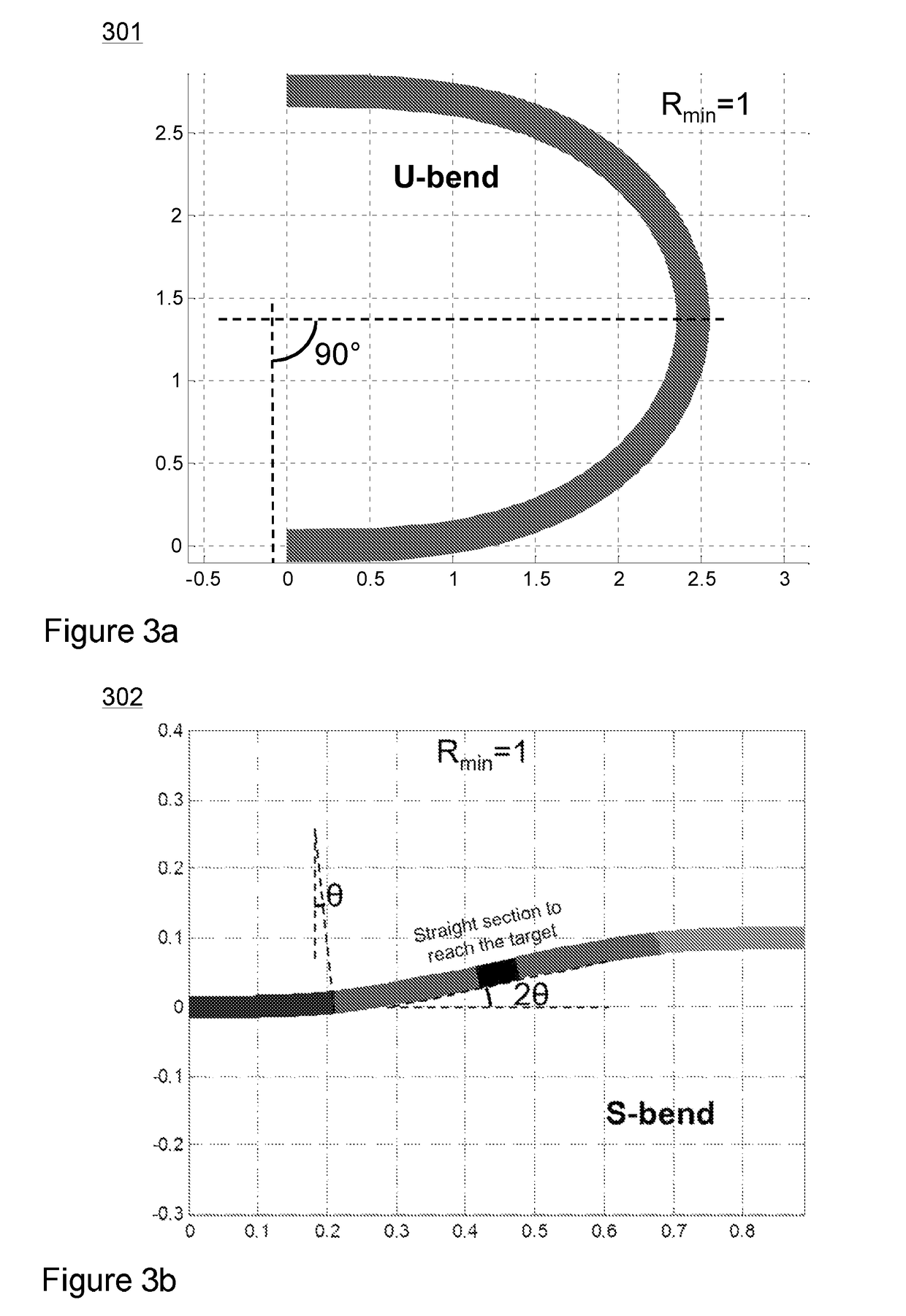Bent optical waveguide
a waveguide and optical technology, applied in the field of optical and photonics, can solve the problems of preventing the realization of advanced waveguide circuits, and limiting the ‘bandwidthdistance’ product of multi-mode waveguides, etc., and achieves the effect of improving and tightening the bend
- Summary
- Abstract
- Description
- Claims
- Application Information
AI Technical Summary
Benefits of technology
Problems solved by technology
Method used
Image
Examples
Embodiment Construction
[0046]In FIG. 1 at 101, by way of example only, two different embodiments of the present invention are generally illustrated at 102 and 104. Bends such as ‘U’-bends, ‘S’-bends, ‘U’-bends and practically any bend of a desired degree may be manufactured. Different basic bend shapes may be cleverly combined to establish more complex bends and (mirror / point) symmetry may be exploited to design the bends.
[0047]For instance, two ‘U’-bends could be combined to form an ‘S’-bend, and the ‘U’-bend itself could be constructed from two mirror-symmetric halves, i.e. doubly symmetric structures could be established. However, a skilled reader will understand such symmetry is not obligatory for utilizing the present invention to establish bends, i.e. the bend portions preceding and following e.g. the point of maximum curvature of a bend do not have to be mirror-symmetric.
[0048]The obtained bends are optically efficient and provide small footprint due to optimized, yet small, non-constant bend radii...
PUM
 Login to View More
Login to View More Abstract
Description
Claims
Application Information
 Login to View More
Login to View More - R&D
- Intellectual Property
- Life Sciences
- Materials
- Tech Scout
- Unparalleled Data Quality
- Higher Quality Content
- 60% Fewer Hallucinations
Browse by: Latest US Patents, China's latest patents, Technical Efficacy Thesaurus, Application Domain, Technology Topic, Popular Technical Reports.
© 2025 PatSnap. All rights reserved.Legal|Privacy policy|Modern Slavery Act Transparency Statement|Sitemap|About US| Contact US: help@patsnap.com



